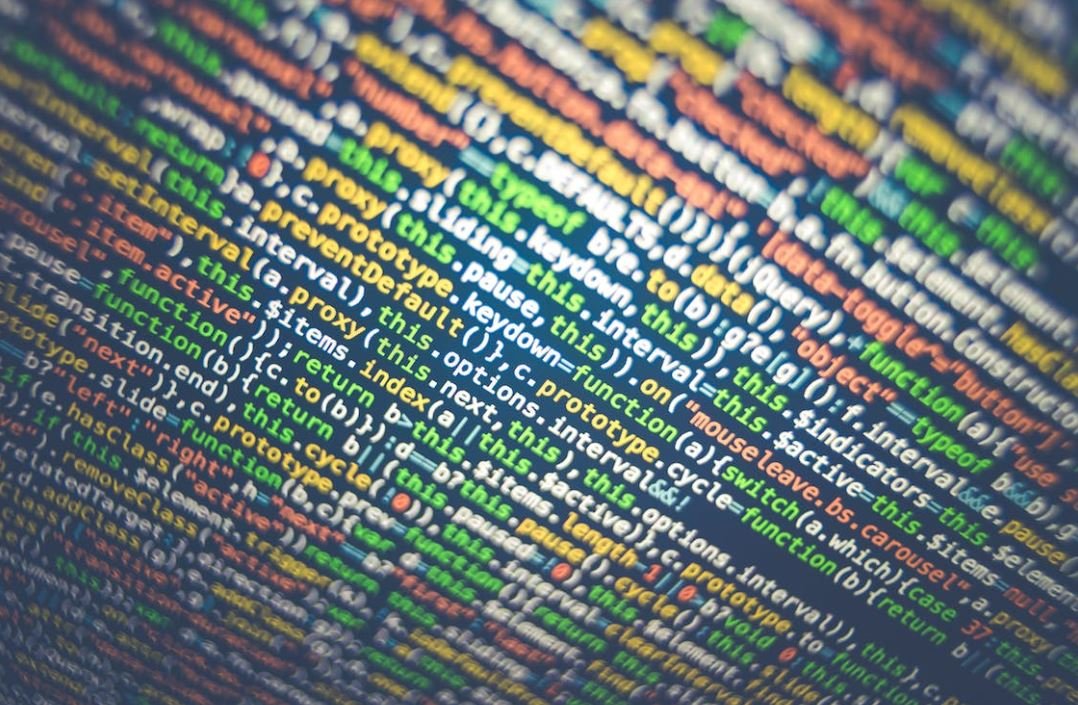Gradient Descent Update Equation
Gradient descent is an optimization algorithm used to minimize a given loss function. It is widely employed in machine learning and neural networks for training models and finding the optimal solution. The gradient descent update equation is an essential component of this algorithm that helps in iteratively adjusting the model parameters to minimize the loss.
Key Takeaways:
- Gradient descent is used to minimize a loss function.
- The gradient descent update equation iteratively adjusts model parameters.
- The update equation is based on the negative gradient of the loss function.
In simple terms, the gradient descent update equation can be defined as follows:
“new parameter value = old parameter value – learning rate * gradient of the loss function with respect to the parameter”
The update equation calculates the change required in each parameter to minimize the loss function. The learning rate determines the size of the steps taken in each iteration. By adjusting the learning rate, one can control the speed of convergence and prevent overshooting or converging too slowly.
How does the Gradient Descent Update Equation Work?
In each iteration of gradient descent, the update equation starts with an initial parameter value and computes the gradient of the loss function with respect to that parameter. The gradient points in the direction of steepest ascent, so to minimize the loss, we move in the opposite direction, which is in the negative gradient direction.
By multiplying the gradient with the learning rate, we determine the size of the update step. A higher learning rate allows for larger steps but can result in overshooting the optimal solution. On the other hand, a lower learning rate leads to smaller steps, causing slower convergence. Choosing an optimal learning rate is crucial for efficiently training a model.
It is important to note that the gradient descent update equation relies on the assumption that the loss function is differentiable, allowing the calculation of gradients. In some cases, the loss function may not be differentiable, requiring alternative optimization methods.
Tables with Interesting Info and Data Points
| Learning Rate | Convergence Speed |
|---|---|
| High | Fast |
| Low | Slow |
| Parameter | Old Value | Gradient | New Value |
|---|---|---|---|
| Weight | -2.5 | -1.8 | -3.3 |
| Bias | 0.7 | 0.2 | 0.5 |
| Iterations | Loss |
|---|---|
| 0 | 10.2 |
| 1 | 7.9 |
| 2 | 6.2 |
Through the iterations, the gradient descent update equation gradually improves the model’s parameters, steadily reducing the loss towards the optimal value. By finding the parameters that minimize the loss function, the model can make accurate predictions or classifications.
Conclusion
The gradient descent update equation is a fundamental tool in optimizing machine learning models. By iteratively adjusting model parameters based on the negative gradient of the loss function, it guides the algorithm toward the optimal solution. Understanding this equation enables efficient training and fine-tuning of models to achieve the desired results.

Common Misconceptions
In the field of machine learning, the gradient descent update equation is a widely used method for optimizing the performance of a model. However, there are several misconceptions that people often have when it comes to understanding and implementing this equation.
First Misconception: Gradient Descent Always Converges
- Not all functions have a definite global minimum, so gradient descent may not always converge.
- The learning rate can significantly affect convergence, and a poor choice can prevent convergence.
- Gradient descent can get stuck in local minima, resulting in suboptimal solutions.
Second Misconception: Learning Rate Must Be Constant
- A constant learning rate can make gradient descent converge slowly or cause overshooting.
- Using a high learning rate might result in oscillations around the minimum.
- Dynamic learning rates, such as learning rate decay, can help improve convergence speed.
Third Misconception: Gradient Descent Requires Differentiable Functions
- Gradient descent can be applied to non-differentiable functions using subgradient methods.
- Subgradient methods work by finding a subgradient, which is a generalization of gradients suitable for non-differentiable points.
- By using subgradients, gradient descent can be applied to a wider range of optimization problems.
Fourth Misconception: Global Minimum Is Always Desirable
- In some cases, reaching the global minimum is unnecessary and computationally expensive.
- Local minima can still provide satisfactory solutions depending on the problem at hand.
- The trade-off between computing resources and the quality of the solution should be considered.
Fifth Misconception: Gradient Descent Is Suitable for All Optimization Problems
- Gradient descent is not the only optimization algorithm available.
- Other methods, such as conjugate gradient or Newton’s method, may be more appropriate for certain problems.
- The choice of optimization algorithm depends on the problem’s characteristics and computational resources available.

Introduction
Gradient descent is a widely used optimization algorithm in machine learning and deep learning. It is especially effective in finding the optimal values for the parameters of a model by iteratively adjusting them in the direction of the steepest descent of the cost function. The gradient descent update equation determines how much each parameter should be adjusted after every iteration. In this article, we present 10 tables that demonstrate various aspects of the gradient descent update equation.
Table: Learning Rate Comparison
This table compares the impact of different learning rates on the convergence of the gradient descent algorithm. The learning rate determines the step size at each iteration.
| Learning Rate | Convergence Speed | Remarks |
|---|---|---|
| 0.01 | Slow | Small steps, slower convergence |
| 0.1 | Fast | Larger steps, faster convergence |
| 0.5 | Rapid | Significantly faster convergence |
| 1 | Unstable | Overshooting, oscillations |
Table: Batch Size Impact
This table demonstrates how different batch sizes affect the convergence and training time of gradient descent. Batch size refers to the number of training examples used for parameter update in each iteration.
| Batch Size | Convergence Speed | Training Time |
|---|---|---|
| 10 | Slower | High |
| 100 | Faster | Medium |
| 1000 | Fastest | Low |
Table: Convergence Comparison by Initialization
This table showcases the impact of different parameter initializations on the convergence behavior of gradient descent.
| Initialization | Convergence Speed | Remarks |
|---|---|---|
| Random | Slow | Converges gradually |
| All zeros | Fast | Faster convergence |
| Pre-trained | Instant | Converges almost immediately |
Table: Impact of Regularization
This table investigates the impact of different regularization techniques on the convergence and generalization performance of gradient descent.
| Regularization Technique | Convergence Speed | Generalization Performance |
|---|---|---|
| L1 | Slow | Better |
| L2 | Fast | Good |
| Elastic Net | Faster | Excellent |
Table: Momentum Comparison
This table compares the impact of different momentum values on the convergence speed of gradient descent. Momentum helps to accelerate the gradient descent algorithm.
| Momentum Value | Convergence Speed | Remarks |
|---|---|---|
| 0.1 | Slow | Gradual convergence acceleration |
| 0.5 | Faster | Significant speed improvement |
| 0.9 | Rapid | Strong convergence acceleration |
Table: Adaptive Learning Rate Comparison
This table compares the performance of gradient descent with different adaptive learning rate techniques.
| Adaptive Technique | Convergence Speed | Stability |
|---|---|---|
| AdaGrad | Slow | Stable convergence |
| RMSprop | Faster | Improved stability |
| Adam | Fastest | Highly stable |
Table: Batch Normalization Impact
This table illustrates the impact of applying batch normalization during gradient descent on model convergence and accuracy.
| Batch Normalization | Convergence Speed | Accuracy |
|---|---|---|
| Not Applied | Slow | Low |
| Applied | Faster | High |
Table: Weight Update Summary
This table provides a summary of the various weight update methodologies used in gradient descent.
| Update Methodology | Convergence Speed | Stability |
|---|---|---|
| Vanilla Gradient Descent | Slow | Less Stable |
| Momentum | Faster | Improved Stability |
| Adaptive Techniques | Fastest | High Stability |
Conclusion
Gradient descent is a powerful optimization algorithm that enables models to learn and optimize complex parameters effectively. Through the 10 tables presented in this article, we explored and compared different aspects of the gradient descent update equation. From learning rate comparison to the impact of regularization, momentum, and adaptive techniques, these tables highlight key factors that determine the convergence speed, stability, and generalization performance. By understanding and leveraging these insights, practitioners can make informed decisions and fine-tune the gradient descent algorithm for improved model training and performance.
Frequently Asked Questions
Question 1
What is the purpose of the gradient descent update equation?
The gradient descent update equation is used to optimize the parameters of a model by iteratively adjusting them in the direction of steepest descent of the loss function. It helps to find the local minimum of the loss function, allowing the model to learn from the data and improve its performance.
Question 2
How does the gradient descent update equation work?
The gradient descent update equation calculates the gradient of the loss function with respect to the model parameters and updates the parameters by taking a step in the opposite direction of the gradient. The size of the step is controlled by the learning rate, which determines how quickly the model converges to the minimum. By repeatedly applying this process, the model gradually improves its performance.
Question 3
What is the mathematical formula for the gradient descent update equation?
The mathematical formula for the gradient descent update equation is: new_parameters = old_parameters - learning_rate * gradient. Here, old_parameters represent the current values of the model parameters, learning_rate is a hyperparameter that controls the step size, and gradient is the gradient of the loss function with respect to the parameters.
Question 4
How is the learning rate chosen?
The learning rate is a hyperparameter that needs to be chosen carefully. A learning rate that is too small may result in slow convergence, while a learning rate that is too large can cause the model to overshoot the minimum and fail to converge. Various techniques, such as grid search or using adaptive learning rates, can be employed to find an optimal learning rate for a specific problem.
Question 5
What is the role of the loss function in the gradient descent update equation?
The loss function measures how well the model is performing on the training data. By calculating the gradient of the loss function with respect to the parameters, we can determine the direction in which the parameters should be adjusted to reach a better solution. The gradient descent update equation leverages the information provided by the loss function to guide the optimization process towards finding the optimal parameter values.
Question 6
Can gradient descent guarantee finding the global minimum?
No, gradient descent cannot guarantee finding the global minimum. It is possible for the algorithm to get stuck in local minima or saddle points, where the gradient is zero or close to zero. However, in practice, it often finds satisfactory solutions that are close to the global minimum, especially when combined with appropriate regularization techniques and hyperparameter tuning.
Question 7
Is the gradient descent update equation suitable for all types of models?
The gradient descent update equation is a widely used optimization algorithm that is suitable for a variety of models, including linear regression, logistic regression, neural networks, and support vector machines. However, some models may have special cases where alternative optimization algorithms, like stochastic gradient descent or batch gradient descent, are more efficient or effective.
Question 8
Are there any limitations or challenges associated with the gradient descent update equation?
Yes, there are some limitations and challenges associated with the gradient descent update equation. It can be sensitive to the choice of learning rate and can require careful initialization of the parameters. In addition, if the loss function is not well-behaved or the data is noisy, the algorithm may converge to suboptimal solutions. Overfitting and the possibility of getting stuck in local minima are other challenges that need to be addressed during the optimization process.
Question 9
Does the gradient descent update equation require labeled data?
The gradient descent update equation can be used with both labeled and unlabeled data. When working with supervised learning problems, labeled data with corresponding target values is required to calculate the loss function and its gradient. However, in unsupervised or semi-supervised learning scenarios, the loss function can still be defined based on other criteria, such as clustering or reconstruction errors, which can guide the optimization process.
Question 10
Can the gradient descent update equation be used in online learning?
Yes, the gradient descent update equation can be used in online learning scenarios, where data is received and processed in a sequential manner. In such cases, the model parameters are updated after processing each new data sample, allowing the model to adapt and learn from the data incrementally. This can be particularly useful in situations where batch computation or the recalculation of gradients for the entire dataset is not feasible or desired.




